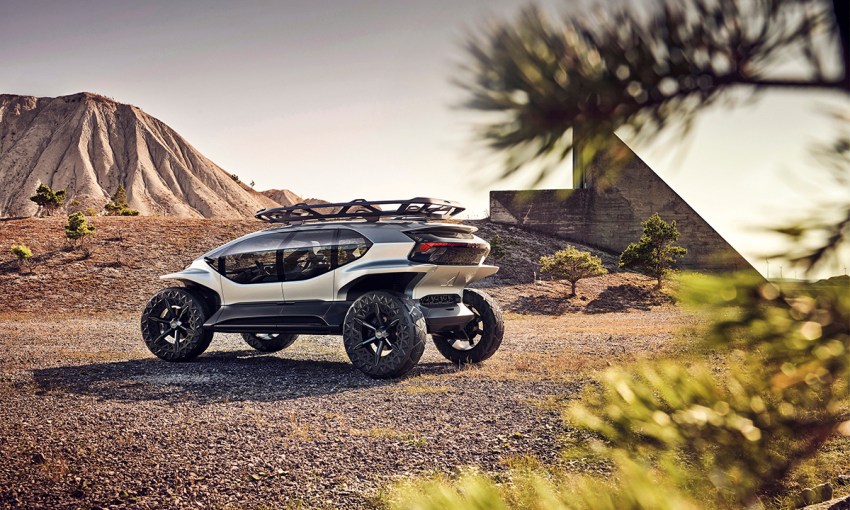If we want to continue exploring Australia’s spectacular natural outback, we’ll need to find a way to do so with a lesser impact on the environment. Audi may just have created the answer.
Motoring: Electrifying off road
The oddly-named AI:Trail looks like it may have come straight from a science fiction movie, but it is Audi’s vision of the future.
The off-roader was unveiled at the recent Frankfurt Motor Show. It’s a four-seater with superb off-road abilities and a quite startlingly futuristic design.
The glass surrounding the cabin extends all the way to ground level, providing unrivalled all-round visibility. The battery capacity ensures sufficient range, even away from dense networks of charging stations (which, of course, is where off-road vehicles tend to operate).
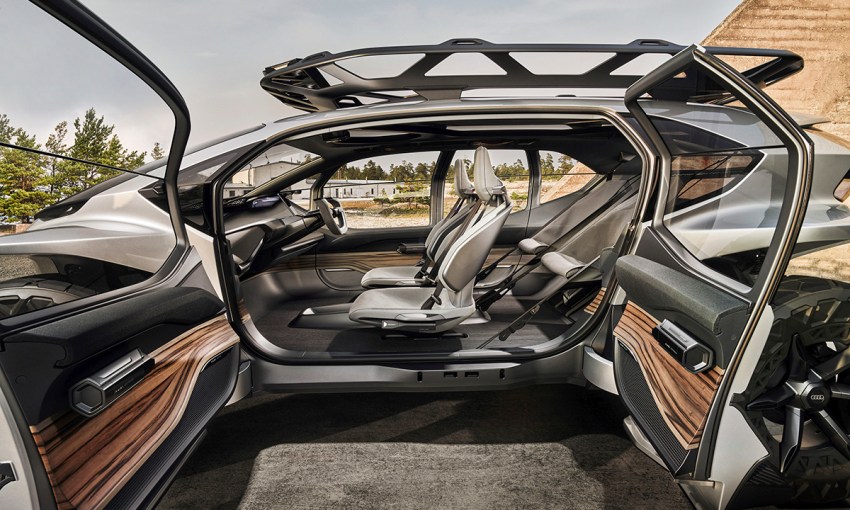
On-road or in easy off-road conditions, the range is 400 to 500km. Even really off-road, the AI:Trail can travel 250km.
Marc Lichte, Audi’s head of design, explains, “With the AI:Trail, we are showing an off-road concept with an emissions-free electric drive for an innovative driving experience away from paved roads.”
The car is equipped with four electric motors, systems for assisted and automated driving and — typically for Audi — quattro permanent all-wheel drive. Each electric motor powers a single wheel, dispensing with differentials and locks that add complexity and weight. If slip is detected, the system simply reduces torque to the affected wheel, although in situations where slip is useful (such as on low-grip uphill stretches) the system permits it automatically.

Unlike the cars of the present, Audi’s concept range — the Aicon, AI:Me, AI:Race and AI:Trail — will no longer have to compromise between uses and scenarios. Instead, they are each designed for much more specific purposes, such as travelling long distances, or commuting around the city. In the future, customers will be able to order any of these specialist models from an Audi on-demand vehicle pool to match their personal preferences and requirements, and lease them for a limited period.
The cabin of the AI:Trail is an extensively glazed space surrounded by polygonal shapes, with room for up to four people. With the electric drive system arranged around the axles and the battery in the floor, there is no need for overhanging sections or separate attachments for the motor or batteries.
In the interior, the side window ridges give passengers space where they objectively need it most — around their shoulders and elbows. The way the side windows extend down low opens up a clear view down to the ground, even between the wheels. The aim of the designers here was to give those inside the vehicle the best possible view of their surroundings, breaking the boundaries between the interior and the world outside.
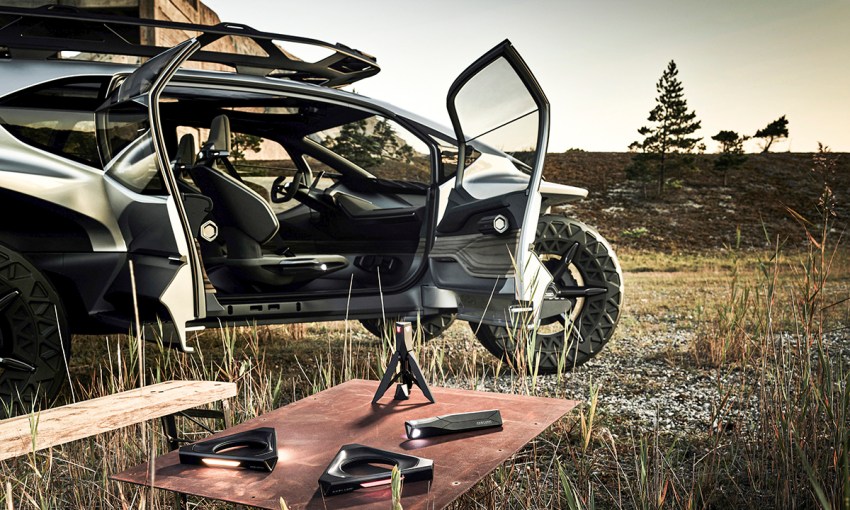
Pedals, a yoke for a steering wheel, a few buttons, and a smartphone docked on the steering column to function as the display and control centre for vehicle and navigation are all that’s needed for interaction between the driver and the vehicle.
The windscreen wraps around the front of the vehicle like the cockpit of a helicopter. Passengers have an unobstructed view of the road, or trail, both in front and to the sides. Almost the entire roof, from the top of the windscreen to the rear spoiler, allows a clear view of the sky and the landscape.
The side sills below the doors act as retractable running boards and the minimalist horizontal mudguards make it possible to see the suspension in action from the cockpit. Integrated into the rear bumper is a separate compartment for dirty items such as hiking boots, climbing gear or wet clothing.
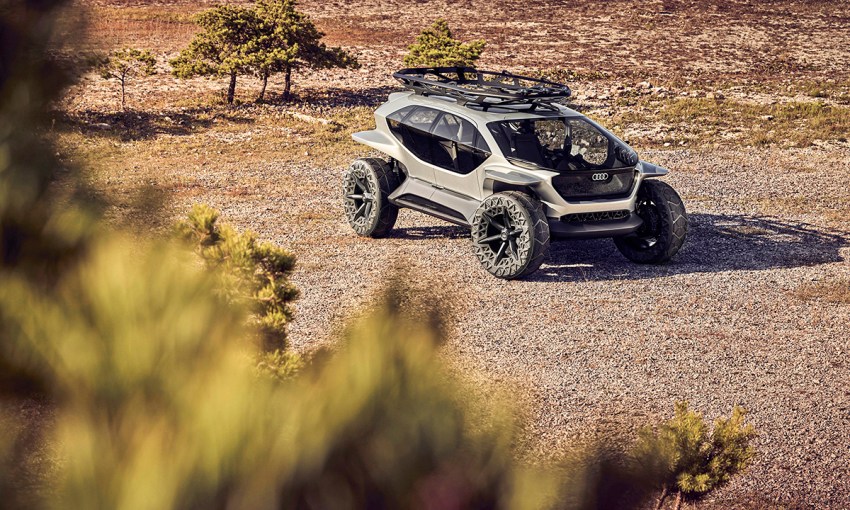
Typical of the innovative thinking, conventional headlights have been replaced with self-contained lights that can shine outward, or inwards for ambient lighting. Meanwhile, five rotorless electronically-operated drones with integrated matrix LED elements, can fly ahead of the AI:Trail to illuminate the path. On-board cameras send a video image to the display in front of the driver via Wi-Fi.
Another light source (we’d call it a “torch”) is magnetically attached to the front seat. It multi-tasks by providing interior ambient lighting, being removable and even having legs so it can double as a campfire light or close-range floodlight.
Naturally, the AI:Trail is moving towards autonomous driving using artificial intelligence and machine learning. The vehicle meets Level 4 (the second highest) automation, allowing the driver to completely transfer driving duties to the car, and only resume control when leaving an area with suitable infrastructure. Off-road is more complicated, so the driver will need to maintain control, but the sensor system will detect road surface, obstacles, ground clearance, incline, tilt and much more.
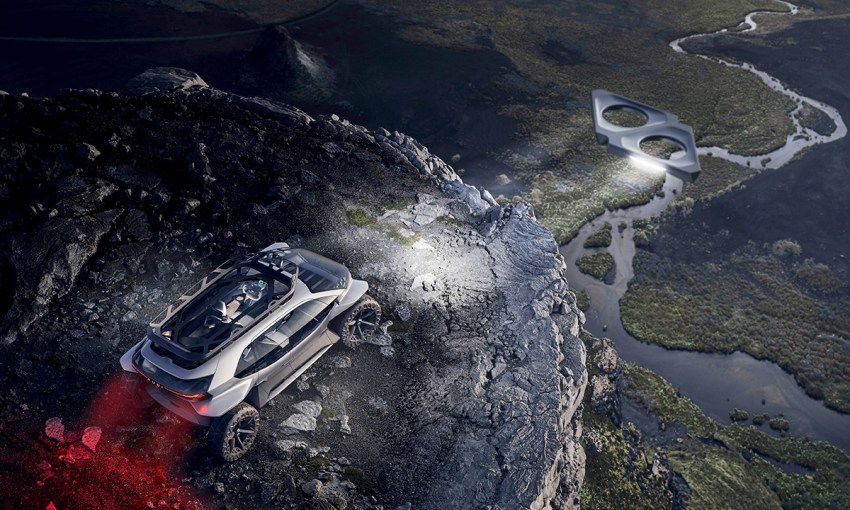
The tyres feature variable, sensor-controlled air pressure regulation. Optical sensors and electronic stability control (ESC) work together to detect the condition of the road surface and adjust the air pressure in the tyres accordingly. When additional traction is needed (such as when driving on sand), it can reduce the pressure and increase it again when switching to asphalt.
The AI:Trail is, of course, only a concept, but a production version of this futuristic vehicle may not be far behind. It shows just how quickly technology is advancing. The only question is: can we mere mortals keep up?
This story first appeared in the November 2019 issue of SALIFE magazine.



